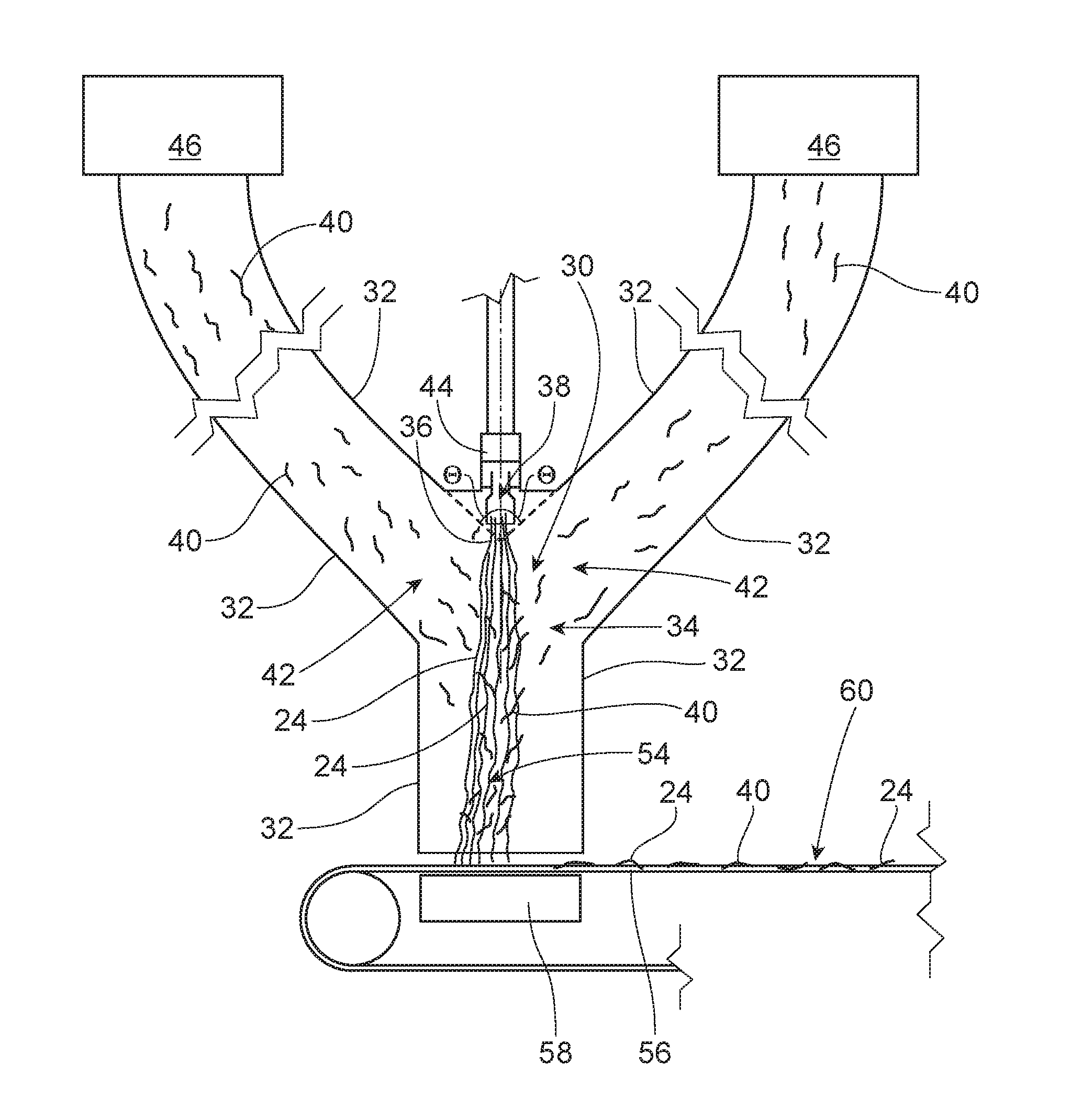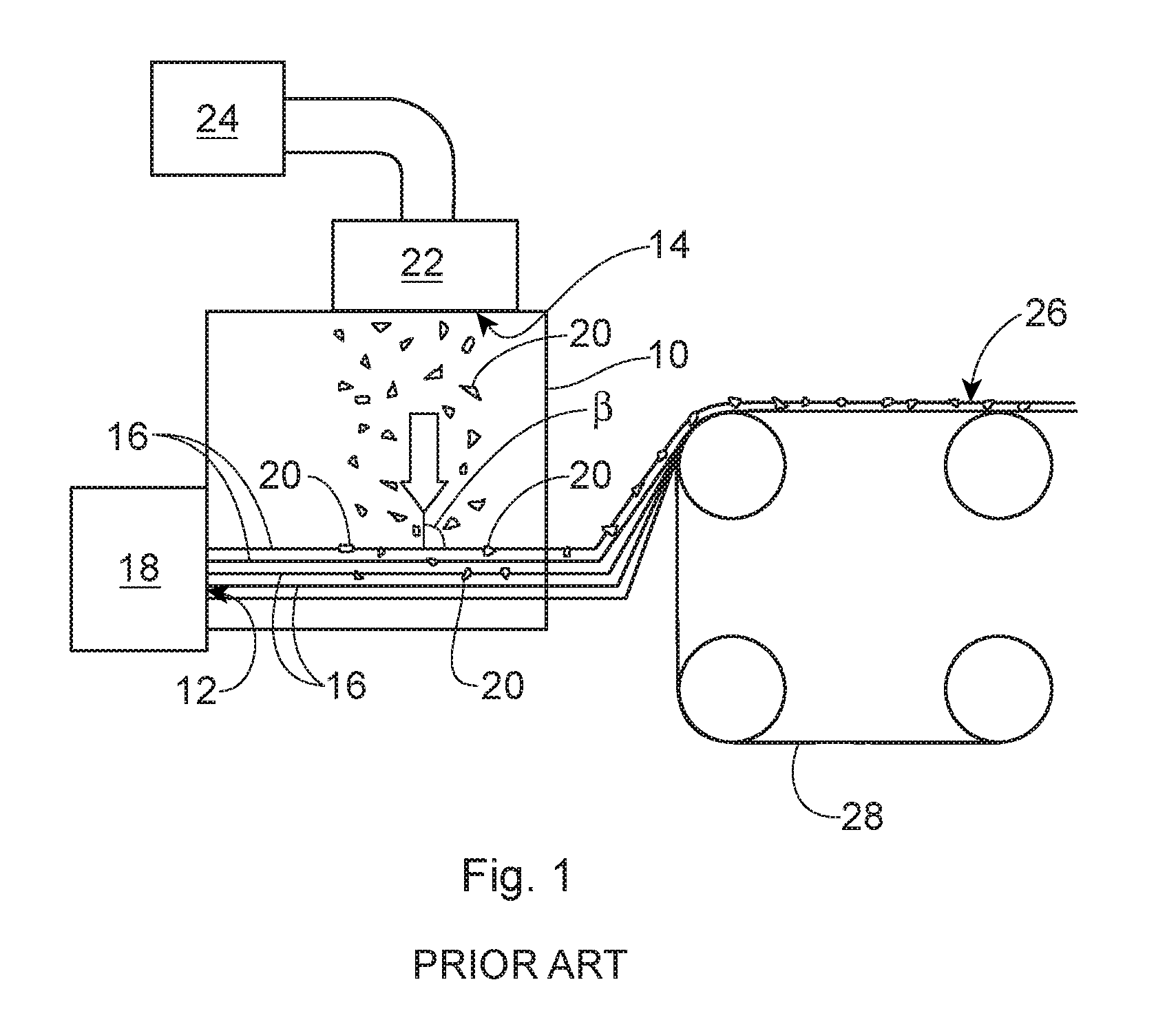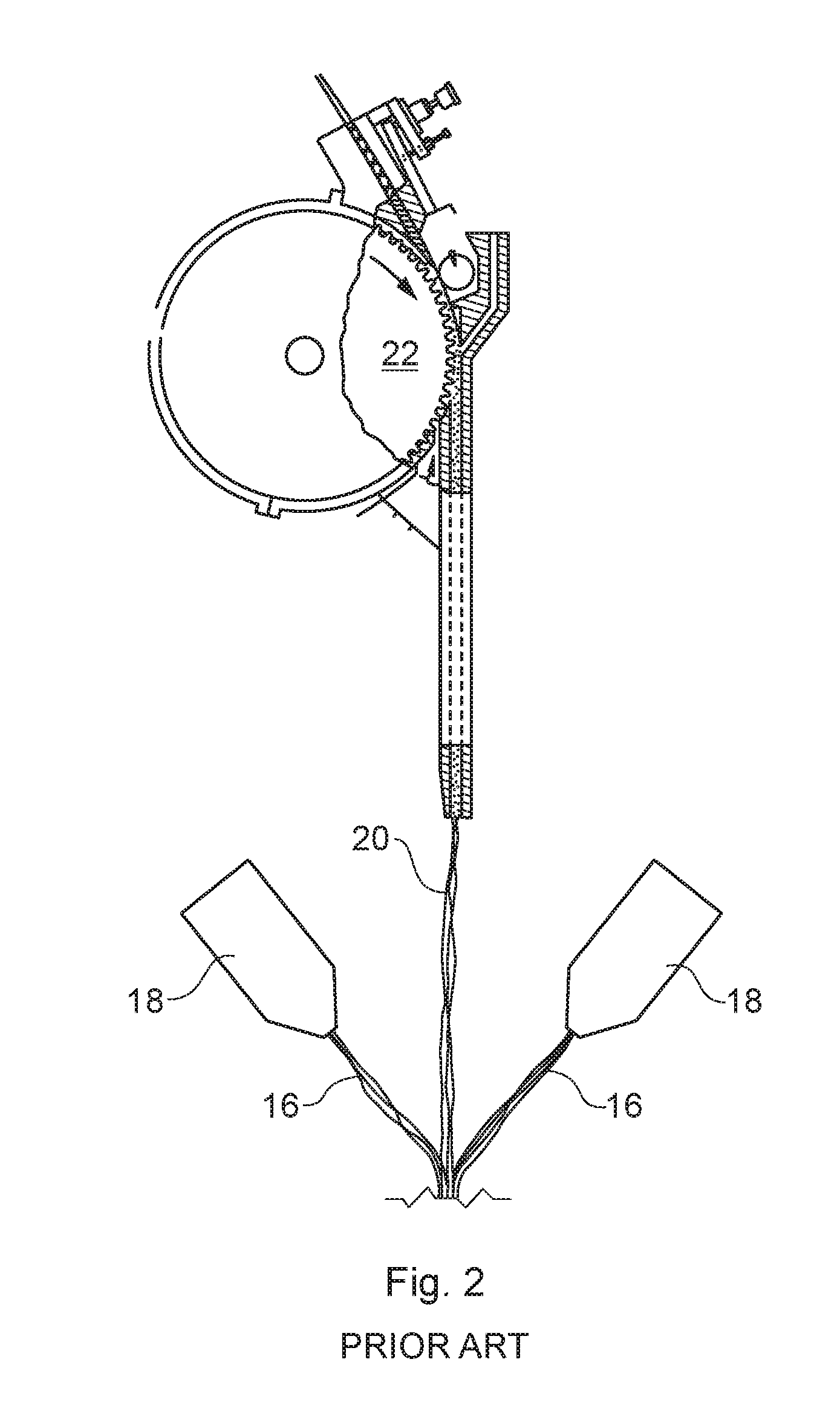Coforming Processes and Forming Boxes Used Therein
a technology of forming boxes and coforming processes, which is applied in the direction of filament/thread forming, filament chemical after-treatment, fibre treatment, etc., can solve the problems of reducing or stalled flow within the forming box, and achieves the reduction of the volume of upward flow, reducing the ratio of lc/ls, and reducing the volume of separated
- Summary
- Abstract
- Description
- Claims
- Application Information
AI Technical Summary
Benefits of technology
Problems solved by technology
Method used
Image
Examples
example 1
[0194]A 47.5%:27.5%:20.0%:5% blend of Equistar MF650x polypropylene:Equistar 650W polypropylene:Equistar PH835 polypropylene:Polyvel S-1416 wetting agent is dry blended, to form a melt blend. The melt blend is heated to 475° F. through a melt extruder. A 15.5″ wide Biax 12 row spinnerette with 192 nozzles per cross-direction inch, commercially available from Biax Fiberfilm Corporation, is utilized. 40 nozzles per cross-direction inch of the 192 nozzles have a 0.018″ inside diameter while the remaining nozzles are unused for PP delivery Approximately 0.19 grams per hole per minute (ghm) of the melt blend is extruded from the open nozzles to form meltblown filaments from the melt blend. Approximately 420 SCFM of compressed air is heated such that the air exhibits a temperature of 395° F. at the spinnerette. Approximately 500 grams / minute of Koch 4825 semi-treated SSK pulp is defibrillated through a hammermill to form SSK wood pulp fibers (solid additive). Approximately 1600 SCFM of ai...
example 2
[0197]A 20%:27.5%47.5%:5% blend of Lyondell-Basell PH835 polypropylene:Lyondell-Basell Metocene MF650W polypropylene:Exxon-Mobil PP3546 polypropylene:Polyvel S-1416 wetting agent is dry blended, to form a melt blend. The melt blend is heated to 400° F. through a melt extruder. A 15.5 inch wide Biax 12 row spinnerette with 192 nozzles per cross-direction inch, commercially available from Biax Fiberfilm Corporation, is utilized. 40 nozzles per cross-direction inch of the 192 nozzles have a 0.018 inch inside diameter while the remaining nozzles are solid, i.e. there is no opening in the nozzle. Approximately 0.19 grams per hole per minute (ghm) of the melt blend is extruded from the open nozzles to form meltblown filaments from the melt blend. Approximately 415 SCFM of compressed air is heated such that the air exhibits a temperature of 395° F. at the spinnerette. Approximately 475 g / minute of a blend of 70% Golden Isle (from Georgia Pacific) 4825 semi-treated SSK pulp and 30% Eucalypt...
PUM
| Property | Measurement | Unit |
|---|---|---|
| angle | aaaaa | aaaaa |
| angle | aaaaa | aaaaa |
| length | aaaaa | aaaaa |
Abstract
Description
Claims
Application Information
 Login to View More
Login to View More - R&D
- Intellectual Property
- Life Sciences
- Materials
- Tech Scout
- Unparalleled Data Quality
- Higher Quality Content
- 60% Fewer Hallucinations
Browse by: Latest US Patents, China's latest patents, Technical Efficacy Thesaurus, Application Domain, Technology Topic, Popular Technical Reports.
© 2025 PatSnap. All rights reserved.Legal|Privacy policy|Modern Slavery Act Transparency Statement|Sitemap|About US| Contact US: help@patsnap.com



